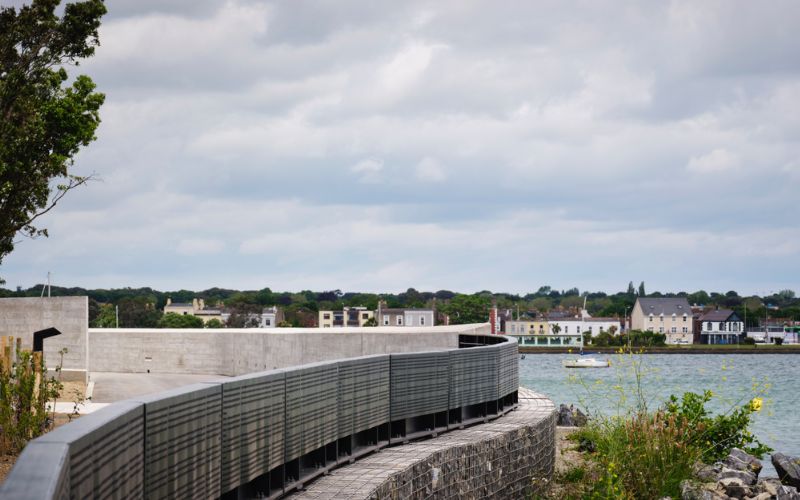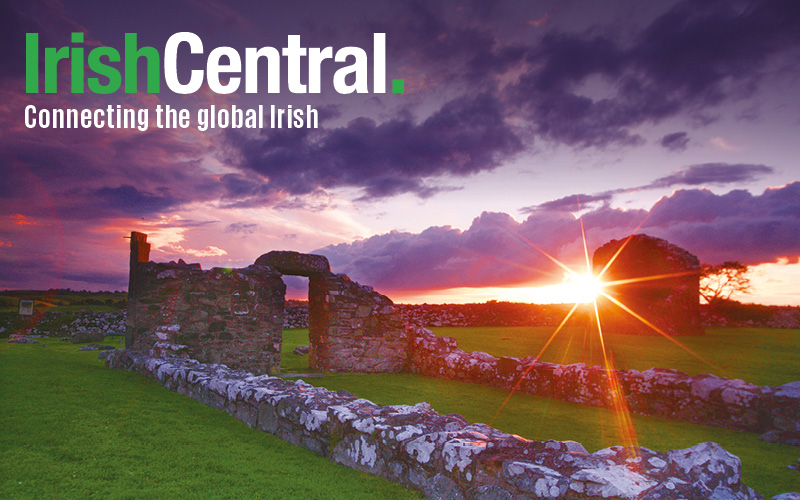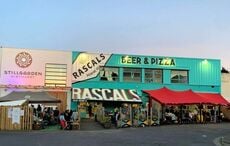If you are reading this, I’ll bet I’ve met you.
Since I began the book tour for my novel Galway Bay one year ago, I’ve encountered you, readers of Irish America magazine, in bookstores and Irish cultural centers, in libraries and church halls, in academic conferences, and amidst the fun of Irish Festivals throughout the country.
You are the man I met at the IBAM (Irish Books and Music) weekend at the Irish American Heritage Centre in Chicago who said he had every issue of Irish America magazine and hoped to go to New York to thank Patricia Harty personally, and then quoted from her last editorial. You’re the young woman in Los Angeles who told me her determination to earn a place on the list of the top one hundred Irish Americans someday was keeping her in college.
You are any one of the hundreds who stopped at my booth during Irish Fests in Cleveland, Chicago, St. Paul, Milwaukee, Buffalo, Brooklyn, Canton (MA), Indianapolis and Long Grove (IL) to say that reading articles in Irish America magazine had spurred an interest in your own family’s history.
“What a coincidence!” I told you. “Writing articles for Irish America inspired me to learn about mine.”
I’ve been lucky enough to work with Patricia Harty on the magazine since the early part of the 25-year span we celebrate this year, and I can tell you that every story in the magazine begins with you. “Our readers will enjoy hearing about this person or that event,” Patricia would say. “Let’s do it.”
An example: We read that the Texas Rangers and pitcher Nolan Ryan were coming to New York. A very Irish name. Does he feel a connection to his roots? Our readers would be interested. The next day we were in the visitors’ dugout at Yankee Stadium with photographer James Higgins. And yes, Nolan Ryan does take pride in his Irish ancestors and the history of the Irish in Texas.
When Anjelica Huston told us, over cups of tea in the Polo Lounge in Beverly Hills, about sitting with her father, director John Huston, as he pointed out the constellations in the night sky over their house in Galway, we both said, “That’s an image our readers will like.”
Over the last quarter century the magazine has given thousands of accomplished Irish Americans the chance to assert, “Pride in Our Heritage,” and allowed hundreds of writers like me to explore the stories, all under the empowering guidance of editor Patricia Harty.
So thanks, Trish, for sending me to visit the oldest Hibernian hall in the U.S. in Charleston, South Carolina, and printing that first article about the 300,000 American servicemen in Northern Ireland during World War II which would become the topic of two books, two documentaries and a feature film.
But I’m most grateful for what I share with you, readers: a new sense of where my family fits in the sweep of Irish-American history. Every issue I read opened new vistas and inspired me to finally tell my family’s story in Galway Bay. And the wonderful reward is to meet you in person, the audience we’ve written for all these years. In the final chapter, Honora Keeley Kelly, the character based on my great-great-grandmother, looks out on the dark prairie from the top of the Ferris wheel at the Columbian Exposition of 1893 Chicago World’s Fair and thinks, “Irish people are scattered over the length and breadth of you, Amerikay. Have you swallowed us up whole and entire?”
My tour has proved what we believe at Irish America magazine. The Irish didn’t disappear. We’re everywhere in the U.S. asserting our connection to Ireland and each other. It doesn’t matter how many ancestors are Irish, or if we’re Irish by choice (“IBM,” one man’s tee-shirt in Minnesota read – Irish By Marriage), or drawn by the love of the music and literature. The two women singing along with Tommy Sands who knew every word of his song “Roses” at the Milwaukee Irish Fest were Japanese-Americans with memories of childhood in the internment camps.
So many of these Irish Festivals began about the same time as Irish America magazine did. It seems as if something shifted during the last quarter century to encourage us to seek a deeper understanding of our identities. Interest in genealogy has surged as well and every festival offers help in tracing your ancestors and a booth where you can order your family’s coat-of-arms.
Now there are close to 100 Irish Festivals across the country: big – 130,000 attended last year’s Milwaukee Irish Festival – and more intimate – by the end of the Long Grove Irish Days I knew many attendees by name. All the Fests offer a great mix of music, cultural exhibits, talks by writers and historians, food (Do you like homemade brown bread?), vendors of Irish-themed gifts and clothing and wonderful Irish dancing by our amazing children who carry pride in our heritage into the future. And all this on warm summer weekends with carnival rides and cotton candy. “We’ve nothing like this in Ireland,” the young Irish fellow working at the booth beside me at Chicago’s Gaelic Park said as the crowds came through our tent. “It’s more fun being Irish in America,” he concluded.
A good point, and here’s a suggestion for a family vacation or day out. Attend an Irish Festival and then visit the monuments to local Irish-American history that more and more communities are erecting. For example, Buffalo has a statue to Chauncey Olcott, who gave us “When Irish Eyes Are Smiling” and “My Wild Irish Rose,” at his birthplace in a section of Buffalo where the street signs are in Irish. Maybe incorporate a more solemn moment at one of the many memorials to the Great Starvation across the country. I’ve been moved by these monuments in Buffalo, Philadelphia, Chicago and at the evocative Hillside Cottage that marks New York’s Great Hunger Memorial.
If you stay at one of the Festival-recommended hotels you’ll be almost guaranteed an after-hours seisun with the musicians staying there. All these Festivals are labors of love and depend on volunteers, who all seem to have a great time. Check out the websites and think of offering your help. I’m adding Kansas City, Dublin, Ohio and Fort Collins, Colorado to this summer’s itinerary. Hope I’ll see you – maybe we’ll meet at one of the Festival Masses where congregations sing and pray in Irish. During these joyous celebrations I thought of our ancestors who, during the penal days, risked death to gather at hidden Mass rocks and secret caves to practice a forbidden faith. How pleased they would be to see us gathered in grace and freedom!
Something happened at one of these masses that captures an insight that I can’t put into words. In the midst of a very informative homily on Celtic monasticism the priest misspoke and called Ireland “the island of saints and sinners” (instead of “and scholars”). After a moment of silence the congregation burst into laughter and then we applauded, a loud and long demonstration that I understood but can’t explain. Was it delight in the joke? Self-deprecation? The “giggling in church” syndrome? I’m not sure. But as I turned to my neighbor to share the good laugh, I thought of my young friend from Ireland. Yes, it is fun to be Irish in America!




Comments